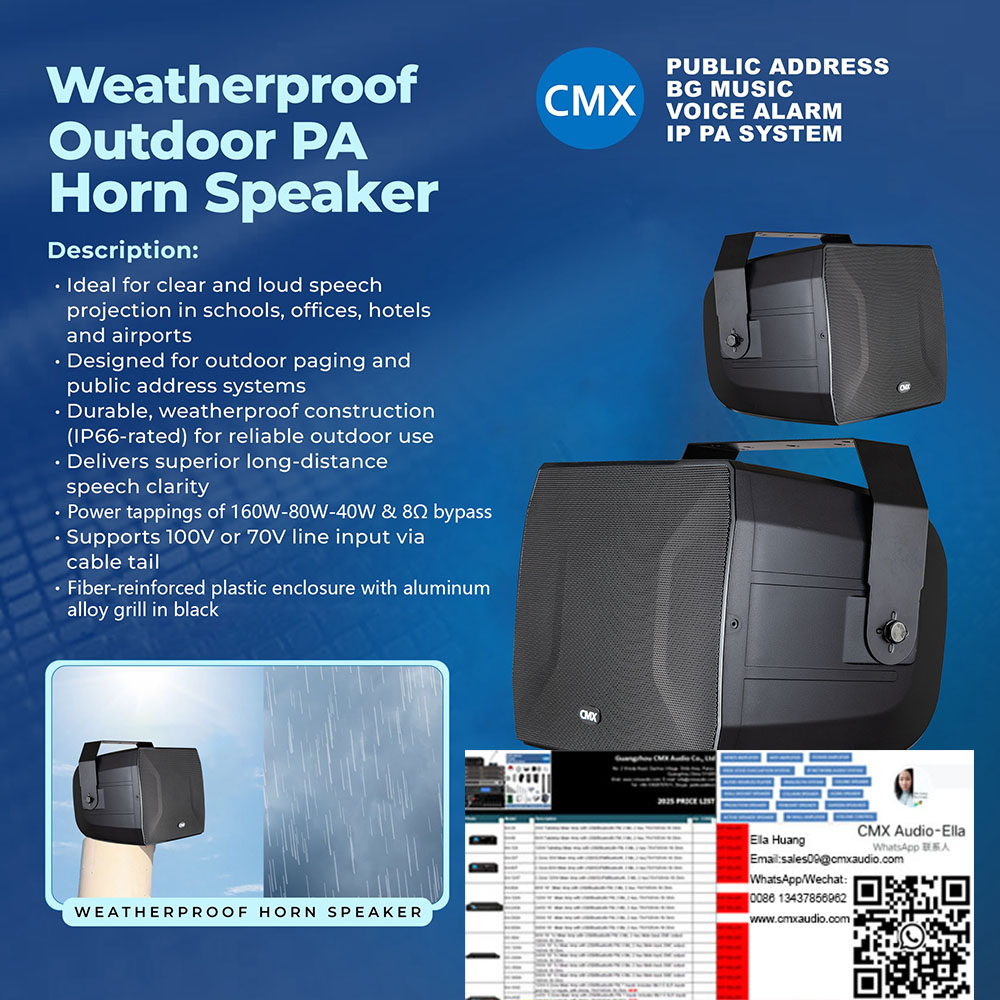News
What Do You Need for a Complete Professional Audio System?
A complete audio system typically includes the following categories of equipment to meet the needs for sound recording, processing, amplification, and reproduction:
I. Sound Source Equipment
Wired Microphones: These convert sound into electrical signals and are essential components in any audio system.
Wireless Microphones: They offer the same functionality as wired microphones but without cables, making them convenient for mobility.
CD/VCD/LD/DVD Players: Used for playing audio and video content from discs.
Electronic Instruments: Such as electronic pianos and electronic drums, which generate musical signals as sound sources.
II. Sound Processing and Quality Enhancement Equipment
Mixing Console: With multiple input channels, it allows individual processing of each sound source and is a key tool for sound engineers to create and mix music.
Mixer: Combines multiple sound sources into a single audio signal.
Equalizer: Adjusts the frequency response of the audio signal to enhance or reduce certain frequencies, improving sound quality.
Exciter: Enhances the clarity and brightness of the sound.
Compressor/Limiter: Automatically adjusts the dynamic range of the audio signal to prevent distortion or equipment damage from overly loud sounds.
Expander: Increases the dynamic range of the audio signal, making the sound more natural and lively.
Noise Gate: Reduces background noise to improve sound purity.
Effects Processor: Provides sound effects like reverb, delay, and echo, as well as special processing for the audio signal.
III. Sound Amplification Equipment
Power Amplifier: Acts as the central hub of the audio system, amplifying the weak electrical signals from the sound source to drive the speakers and produce loud, clear sound.
IV. Sound Reproduction Equipment
Speakers: These convert audio signals back into sound and are the final output devices in an audio system. The quality of the speakers directly affects the overall performance of the system.
Headphones: Another type of sound reproduction device, typically used for personal listening and offering privacy and portability.
V. Other Auxiliary Equipment
Audio Cables: Used to connect various components of the audio system, such as sound sources, amplifiers, and speakers.
Power Sequencer: Controls the order in which audio equipment is powered on and off to protect devices from electrical surges.
Monitor Speakers: Used by sound engineers to listen to and adjust the sound quality of the audio system.
In summary, a complete audio system includes sound source equipment, sound processing and quality enhancement equipment, sound amplification equipment, sound reproduction equipment, and other auxiliary devices. These components work together to record, process, amplify, and reproduce sound, meeting various needs for audio. When choosing audio equipment, it's recommended to consider your budget, usage scenarios, and personal sound preferences. Pls contact us for recommendation and quotation.

RELATED NEWS
- WSK-530H EA-120A sound system in factory wall speaker 2025-07-28
- 6 Zone background music system for restaurants line array pa system 2025-07-25
- pa system amplifier 2025-07-22
- what is a pa system? 2025-07-08
- What is Public Address System (PA System)? 2025-05-13
CATEGORIES
LATEST NEWS
CONTACT US
Contact:Ella Huang
Phone:+8613437856962
Tel:+8613437856962
Email:sales@lecaudio.com
Add:Dashi Industrial Park, Panyu District, Guangzhou City, Guangdong Province
 Ella Huang
Ella Huang Ella Huang
Ella Huang